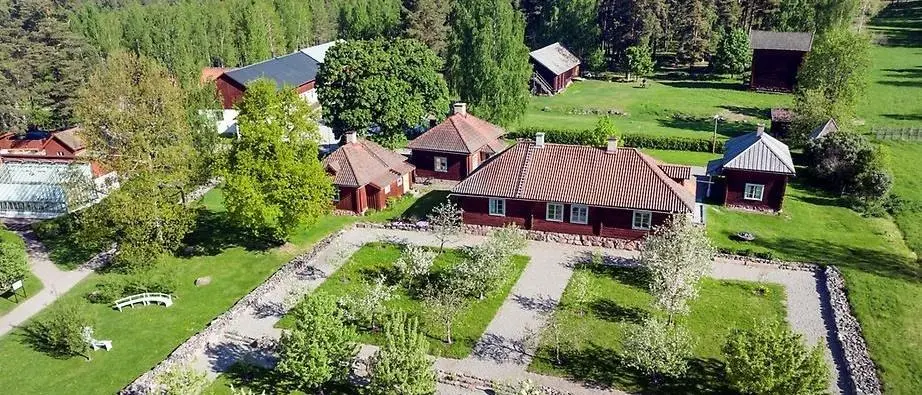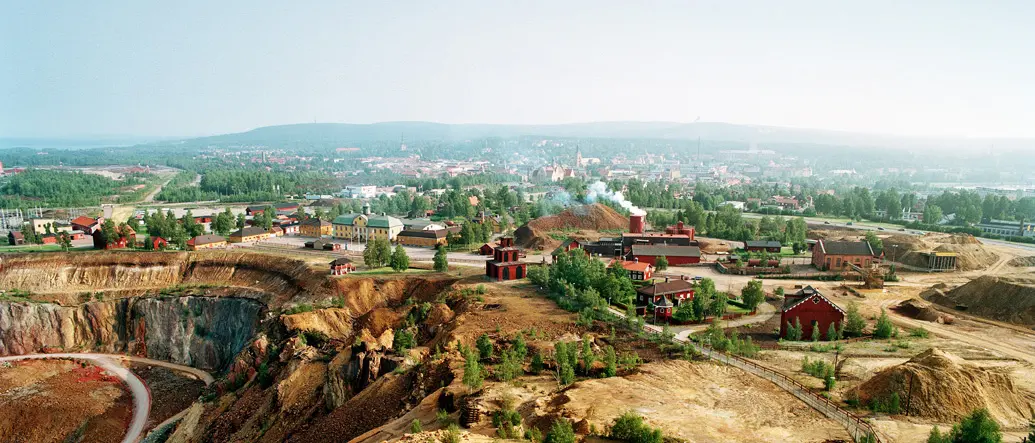
About the World Heritage of Falun
In 2001, the industrial-historic landscape around Stora Kopparberget and Falun was added to the UNESCO World Heritage List. A thousand years of history is the basis of this fantastic award.
In Falu Mine, copper ore was mined and then processed in the cabins in the city and along the watercourses of freeminer estates. The miners lived near the mine in areas that are now living, well-preserved wooden districts. The World Heritage Site also includes slag piles, watercourses and farming landscapes.
In the 1600s, Falun was an international city. The Falu Mine was the country’s largest and most modern workplace at the time. Seventy per cent of Europe’s copper came from Falun.
Falun had a strong influence on technical, social and political developments in Sweden and Europe and helped shape today’s Swedish industrial society. The World Heritage of Falun includes the mine, the city and the surrounding freeminer estates.

UNESCO WORLD HERITAGE SITE JUSTIFICATION
The historic industrial landscape around the Great Copper Mountain and Falun constitutes one of the main areas of mining management and metal production. Although mining ceased at the end of the 20th century, it had a strong influence on the technological, economic, social and political development of Sweden and Europe over many centuries.
%20(2)%2002712.webp)
THE HISTORY OF The World Heritage of Falun IN BRIEF
Copper ore has been mined in Falun for about 1,000 years. In the 1600s, Falun was the treasure chest everyone was talking about in Europe, as the mining industry filled two-thirds of the copper demand in Europe. Copper from Falun was transformed into coins and household utensils and adorned castle roofs and church spires in areas as far away as the Mediterranean. Falun’s wealth can be seen in the town hall, Kristine Church and other magnificent buildings.
Falu Mine was Sweden’s largest workplace for a long time, and the city was considered an international metropolis in the 1600s.
Mining operations in Falun ceased in 1992, but Falu Mine is today one of Dalarna’s largest tourist destinations.
Some examples of pioneering in the Falun mining industry:
- The first public limited company in Sweden was established in 1288.
- In 1695, Gruvhospitalet, Sweden’s first emergency hospital, was opened. At the time, it was a large facility with twelve beds.
- From early on, miners were entitled to free medical care, scheduled leave and a fair wage, and were able to support a large family.
- In the 1700s, Falu Mine was one of the first major tourist attractions in Sweden.
- In 1850, the world’s first alcohol monopoly, now known as Systembolaget, was started in Falun. The reason behind this was that the many restaurants in the city led to unhealthy drinking. All sales of alcohol are still regulated through Systembolaget in Sweden.
- Falu red paint is made from residual products from the Falu mine. Today, the colour is a symbol of Swedish building maintenance.
More than a thousand years of mining and metal production was the basis for UNESCO naming the mine, the city and the freeminer estates a World Heritage Site in 2001. It is a place with relevance for all of humanity.
Visit the Dalarna Museum and Falu Mine, whose exhibitions, films and shows tell the story of the fantastic one-thousand-year history that led Falun to become a World Heritage Site!
Falugruva.se  Länk till annan webbplats, öppnas i nytt fönster.
Länk till annan webbplats, öppnas i nytt fönster.
Dalarnasmuseum.se Länk till annan webbplats, öppnas i nytt fönster.
Länk till annan webbplats, öppnas i nytt fönster.
